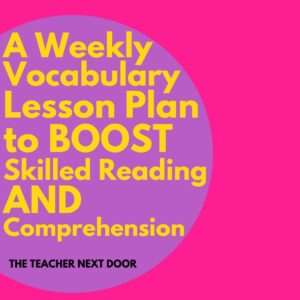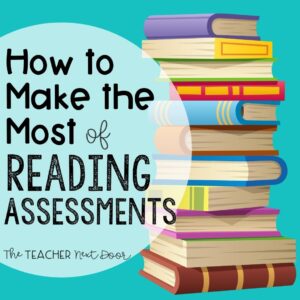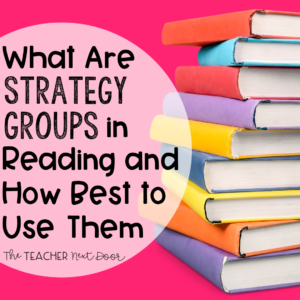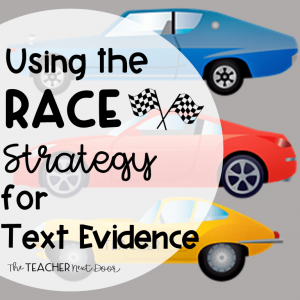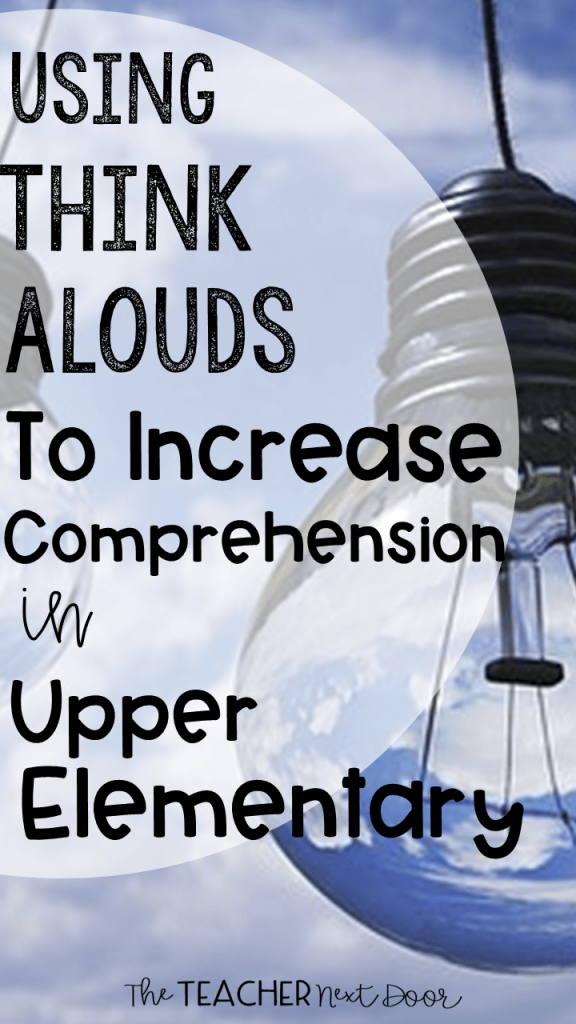
The Think Aloud technique is a great way to increase reading comprehension in upper elementary students! Think alouds are particularly powerful because they help teach students how to actively monitor comprehension as part of the reading process.
We know that good readers monitor comprehension automatically. But for average readers, struggling readers, and English language learners, Think Alouds can help them understand how to think through a text in an interactive way, in order to find meaning.
So, What Exactly is a Think Aloud?
A Think Aloud is a technique that teachers can use to make their thinking transparent.
The idea is that as a teacher reads a short text, he/she will stop every now and then to explain what he/she is thinking (and not to ask students questions). It’s as if students are able to eavesdrop on someone’s thinking to see the thought processes and problem-solving that goes on while reading. Think Alouds make the invisible process of reading, visible!
Think Alouds teach students how good readers monitor comprehension.

What are the Benefits of Using Think Alouds?
1. Think Alouds boost reading comprehension.
2. Think Alouds help struggling readers and English Language Learners.
3. Think Alouds help students read strategically across genres and subjects.
4. Think Alouds can be used in a variety of learning settings for whole class, small groups, and one on one.
What are the Steps in Planning a Think Aloud?
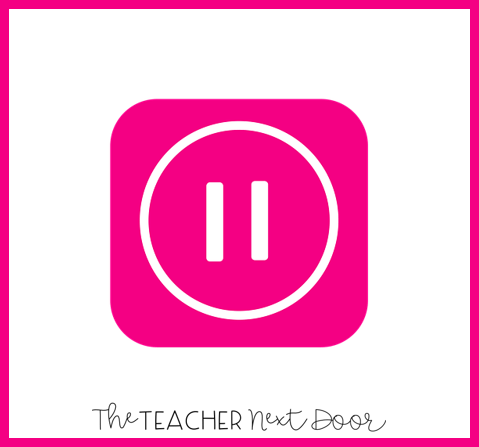
1. Read the Text Beforehand to Find Places to Pause
Think Alouds work best when you take the time to plan them ahead a bit. This is one type of lesson which isn’t as successful doing it on the fly.
To start, grab sticky notes and a pen and read through the text by yourself. As you read, look for places which might work well as a Think Aloud moment.
You’ll be looking for two types of places:
- Words, or sentences/paragraphs which might be stumbling blocks for readers
- Places that are comprehension teaching opportunities (vocabulary, context clues, theme, main idea, characters, inferences, compare and contrast, fix-up strategies…)
Remember…Think Alouds may occur before, during, or after reading!

2. Narrow Your Focus
The first time you go through a picture book or a piece of text, you may find lots of places that would be good places to pause and use the Think Aloud technique.
You’ll want though, to choose only about 5 spots or so for a single lesson. Otherwise, kids will lose interest and the book’s meaning may be lost in all of the Thinking Alouding (if that’s even a word!).
So, how do you choose which places are the BEST places to stop?
A. Use the places which support the standard you’re trying to teach.
B. Choose places which will be the MOST helpful for your students, based on their needs.
C. Pick places which focus on BIG ideas, with higher-level thinking strategies, and NOT minor details.

Use Sticky Notes to Remind Yourself of Where to Pause and the Reading Concept You Want to Model
While each teacher has his/her own teaching style, here are some examples of what a single Think Aloud moment might sound like:
- After reading this sentence, it’s making me think that the bat is going to to become friends with the birds. I’m going to keep reading a bit and see if my prediction is correct.
- Hmmm… It says famished, but I’m not exactly sure what this word means. I’m going to read around the word and see if context clues might help me understand it better… Oh, so it said that the mouse decided to explore the castle because he was desperate to find some cheese. I’m thinking that famished must mean really hungry.
- So, I just read that entire paragraph, but it doesn’t really make sense to me. I’m going to try re-reading it more slowly to see if that might help.
- Well, now that the book is over, I’m thinking that its theme is determination. Each one of the people they talked about had some kind of goal, and they weren’t able to make things work at first. It took them a lot of hard work and perseverance to be successful
Have you tried Think Alouds in your classroom? I’d love for you to comment and tell me what you think!
Want more reading comprehension strategies for upper elementary kids? You might like these posts:
The Best Reading Comprehension Strategies for Upper Elementary
Reading Comprehension Fix-Up Strategies for Upper Elementary
If you’d like time saving reading materials for 3rd – 6th graders which focus on standards but are highly engaging, I’d love for you to check out my store:
Click here to take a look at Reading Resources for Upper Elementary.
Thanks so much for stopping by!


